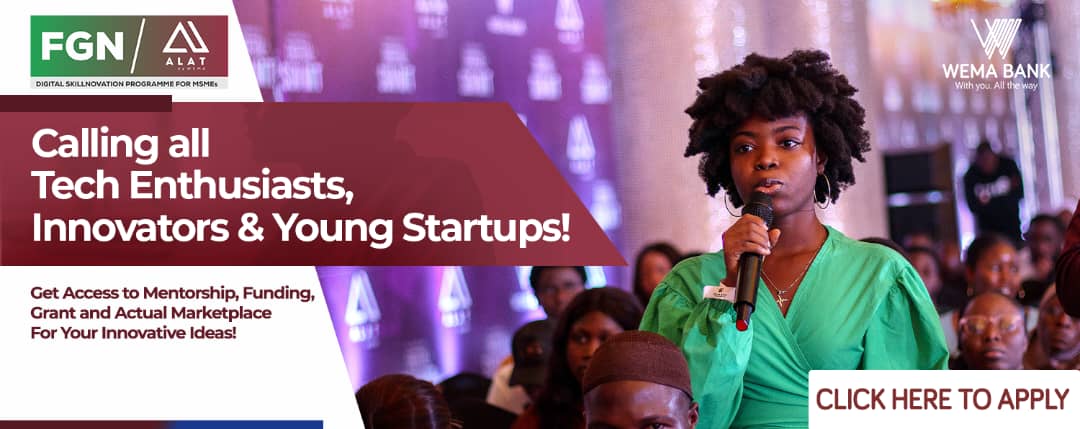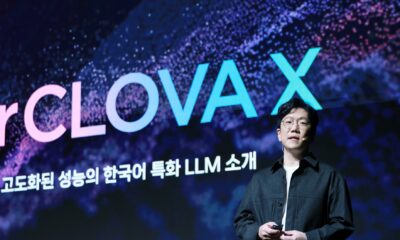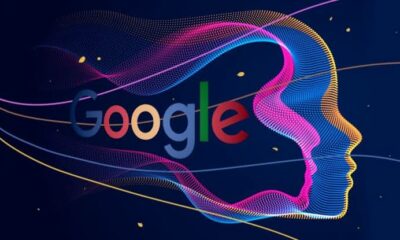
News
The Future of Generative AI: 10 Trends to Watch in 2023

Generative AI is a branch of artificial intelligence that uses advanced algorithms to create new content or artifacts that previously relied on human creativity or intelligence. Examples of generative AI include chatbots, image generators, code builders, and music composers.
Generative AI is a disruptive and transformative technology that can affect various domains and industries. From enhancing human creativity and productivity to improving customer experience and satisfaction, generative AI can offer various benefits for business and society.

However, generative AI also poses various risks and challenges that need to be addressed. From violating intellectual property and ethical rights to generating fake or misleading content or artifacts, generative AI can also cause harm and damage if not used responsibly and ethically.
In this article, we will explore some of the main trends and challenges in generative AI in 2023, based on the latest research and insights from experts and practitioners. We will also provide some recommendations and suggestions for further reading or action.
Trend 1: Hyper-Personalization
Hyper-personalization is the ability of generative AI to create personalized experiences based on individual preferences and behaviors. Unlike personalization, which curates previously generated content to a specified set of classifications, hyper-personalization uses generative AI to create content that is unique and tailored to each user.

Some examples of hyper-personalization in different domains are:
– Media: Generative AI can create personalized content such as news articles, videos, podcasts, and music that match the user’s interests, preferences, and mood.
– Marketing: Generative AI can create personalized ads, offers, recommendations, and messages that increase the user’s engagement, loyalty, and conversion.
– Education: Generative AI can create personalized learning materials, assessments, feedback, and guidance that adapt to the user’s level, pace, style, and goals.
– Healthcare: Generative AI can create personalized diagnosis, treatment, prevention, and wellness plans that consider the user’s medical history, genetics, lifestyle, and environment.
The benefits of hyper-personalization for users and businesses are:
– Enhanced user satisfaction and retention
– Increased user trust and loyalty
– Improved user outcomes and performance
– Higher user value and revenue
The risks of hyper-personalization for users and businesses are:
– Privacy invasion and data misuse
– Bias and discrimination
– Manipulation and deception
– Loss of diversity and serendipity
Trend 2: Conversational AI
Conversational AI is the ability of generative AI to enable natural and engaging interactions with users through voice or text. Conversational AI uses natural language processing (NLP), natural language generation (NLG), and natural language understanding (NLU) to understand the user’s intent The AI 50 2023: Generative AI Is Exploding. These Are The Most Important Trends You Need To Know], generate relevant responses ChatGPT, and maintain a coherent dialogue.
Some examples of conversational AI in different domains are:
– Customer service: Conversational AI can provide 24/7 support to customers through chatbots [Top Strategic Technology Trends for 2022: Generative AI], voice assistants [Amazon Alexa], or virtual agents [IBM Watson Assistant] that can answer queries, resolve issues, provide information, or perform tasks.
– E-commerce: Conversational AI can provide personalized shopping assistance to customers through chatbots Shopify Ping, voice assistants Google Shopping Actions, or virtual agents Sephora Virtual Artist that can offer recommendations, reviews, comparisons, or transactions.
– Entertainment: Conversational AI can provide immersive entertainment experiences to users through chatbots Replika, voice assistants Google Assistant Games, or virtual agents Simsimi that can tell stories, play games, or have conversations.
– Social media: Conversational AI can provide social interaction opportunities to users through chatbots Facebook Messenger Bots, voice assistants Snapchat Cameos, or virtual agents Persona that can mimic celebrities, friends, or strangers.
The benefits of conversational AI for users and businesses are:
– Improved user experience and satisfaction
– Reduced user effort and frustration
– Enhanced user engagement and loyalty
– Lowered operational costs and increased efficiency
The risks of conversational AI for users and businesses are:
– Miscommunication and misunderstanding
– Lack of empathy and emotion
– Abuse and harassment
– Ethical and legal dilemmas
[the_ad id=”33485″]
Trend 3: AI for Scientific Research
AI for scientific research is the ability of generative AI to accelerate scientific discovery and innovation by generating novel hypotheses, designing experiments, analyzing data, and synthesizing knowledge. AI for scientific research uses various techniques such as generative adversarial networks (GANs), transformers, latent diffusion, and evolutionary algorithms to create new insights and solutions that previously relied on human expertise and intuition.
Some examples of AI for scientific research in different domains are:
– Biology: Generative AI can create new molecules, proteins, drugs, or vaccines that can treat diseases, enhance health, or improve biotechnology DeepMind AlphaFold.
– Chemistry: Generative AI can create new materials, compounds, or reactions that can improve energy, environment, or manufacturing IBM RXN.
– Physics: Generative AI can create new models, theories, or simulations that can explain phenomena, test predictions, or explore possibilities CERN Open Data Portal.
– Medicine: Generative AI can create new diagnosis, treatment, prevention, or wellness plans that can consider the patient’s medical history, genetics, lifestyle, and environment Babylon Health.
The benefits of AI for scientific research for researchers and society are:
– Increased scientific productivity and creativity
– Improved scientific quality and accuracy
– Enhanced scientific collaboration and communication
– Advanced scientific knowledge and innovation
The risks of AI for scientific research for researchers and society are:
– Intellectual property and ethical rights violation
– Fake or misleading research or artifacts
– Human agency and accountability reduction
– Social and economic inequalities exacerbation
Trend 4: Image Generators
Image generators are the ability of generative AI to create realistic and high-quality images from text descriptions DALL-E, sketches Sketch2Pix, or other images Stability. Image generators use various techniques such as GANs, transformers, and latent diffusion to generate novel outputs that match the desired specifications or criteria.
[the_ad id=”41670″]
Some examples of image generators in different domains are:
– Art: Image generators can create original artworks or remix existing artworks based on the style, mood, or genre of the user’s choice Artbreeder.
– Design: Image generators can create logos, icons, banners, or posters based on the user’s inputs or preferences Logojoy.
– Gaming: Image generators can create characters, environments, or scenarios based on the user’s inputs or preferences NVIDIA GameGAN.
– Education: Image generators can create illustrations, diagrams, or animations based on the user’s inputs or preferences Diagram Generator.
The benefits of image generators for users and businesses are:
– Enhanced user creativity and productivity
– Improved user experience and satisfaction
– Increased user engagement and loyalty
– Higher user value and revenue
The risks of image generators for users and businesses are:
– Intellectual property and ethical rights violation
– Fake or misleading images or artifacts
– Bias and discrimination
– Cybersecurity and privacy threats
Trend 5: Code & App Builders
Code & app builders are the ability of generative AI to generate code or app interfaces from natural language commands GitHub Copilot or examples AppGyver. Code & app builders use large language models such as ChatGPT to generate relevant outputs that match the desired specifications or criteria.
Some examples of code & app builders in different domains are:
– Software development: Code & app builders can create code snippets, functions, modules, or frameworks based on the user’s inputs or preferences ChatGPT Code Builder.
– Web design: Code & app builders can create web pages, layouts, styles, or animations based on the user’s inputs or preferences Webflow.
– Education: Code & app builders can create tutorials, exercises, quizzes, or feedback based on the user’s inputs or preferences Codecademy.
The benefits of code & app builders for users and businesses are:
– Enhanced user creativity and productivity
– Improved user experience and satisfaction
– Increased user engagement and loyalty
– Lowered operational costs and increased efficiency
The risks of code & app builders for users and businesses are:
– Intellectual property and ethical rights violation
– Fake or misleading code or artifacts
– Bias and discrimination
– Cybersecurity and privacy threats
[the_ad id=”41664″]
Trend 6: Video Production
Video production is the ability of generative AI to create videos from text scripts Text2Video or audio clips Audio2Video.
Video production uses text-to-video or audio-to-video synthesis methods to generate novel outputs that match the desired specifications or criteria.
Some examples of video production in different domains are:
– Entertainment: Video production can create movies, shows, documentaries, or trailers based on the user’s inputs or preferences Synthesia.
– Education: Video production can create lectures, presentations, demonstrations, or animations based on the user’s inputs or preferences Loom.
– Marketing: Video production can create ads, testimonials, reviews, or comparisons based on the user’s inputs or preferences Vidyard.
The benefits of video production for users and businesses are:
– Enhanced user creativity and productivity
– Improved user experience and satisfaction
– Increased user engagement and loyalty
– Higher user value and revenue
The risks of video production for users and businesses are:
– Intellectual property and ethical rights violation
– Fake or misleading videos or artifacts
– Bias and discrimination
– Cybersecurity and privacy threats
Trend 7: Generative Design
Generative design is the ability of generative AI to optimize design solutions for various domains such as architecture, engineering, fashion, and art. Generative design uses evolutionary algorithms, reinforcement learning, and neural networks to generate novel outputs that match the desired specifications or criteria.
Some examples of generative design in different domains are:
– Architecture: Generative design can create buildings, structures, or spaces that optimize for aesthetics, functionality, sustainability, or cost Autodesk Generative Design.
– Engineering: Generative design can create products, components, or systems that optimize for performance, durability, efficiency, or safety SolidWorks Generative Design.
– Fashion: Generative design can create clothing, accessories, or patterns that optimize for style, comfort, fit, or quality Stitch Fix Algorithms.
– Art: Generative design can create artworks or sculptures that optimize for beauty, originality, expression, or meaning Artomatix.
The benefits of generative design for users and businesses are:
– Enhanced user creativity and productivity
– Improved user experience and satisfaction
– Increased user engagement and loyalty
– Higher user value and revenue
The risks of generative design for users and businesses are:
– Intellectual property and ethical rights violation
– Fake or misleading design or artifacts
– Bias and discrimination
– Cybersecurity and privacy threats
Trend 8: Speech Synthesis
Speech synthesis is the ability of generative AI to produce natural and expressive speech from text Amazon Polly or other modalities Descript. Speech synthesis uses techniques such as WaveNet, Tacotron, and FastSpeech to generate novel outputs that match the desired specifications or criteria.
Some examples of speech synthesis in different domains are:
– Voice assistants: Speech synthesis can create voice responses for voice assistants such as Siri Apple Siri, Alexa Amazon Alexa, or Google Assistant Google Assistant that match the user’s inputs or preferences.
– Audiobooks: Speech synthesis can create audio versions of books or articles that match the user’s inputs or preferences Audible.
– Podcasts: Speech synthesis can create podcast episodes or segments that match the user’s inputs or preferences Anchor.
– Music: Speech synthesis can create lyrics or vocals for songs that match the user’s inputs or preferences Jukebox.
The benefits of speech synthesis for users and businesses are:
– Enhanced user creativity and productivity
– Improved user experience and satisfaction
– Increased user engagement and loyalty
– Higher user value and revenue
The risks of speech synthesis for users and businesses are:
– Intellectual property and ethical rights violation
– Fake or misleading speech or artifacts
– Bias and discrimination
– Cybersecurity and privacy threats
Trend 9: Intelligent Process Automation
Intelligent process automation is the ability of generative AI to automate complex and repetitive business processes by generating workflows [Zapier], rules Airtable, and actions IFTTT from data or user inputs. Intelligent process automation uses various techniques such as natural language processing (NLP), natural language generation (NLG), natural language understanding (NLU), computer vision, and machine learning to generate novel outputs that match the desired specifications or criteria.
Some examples of intelligent process automation in different domains are:
– Finance: Intelligent process automation can automate tasks such as invoicing, accounting, reporting, or auditing that optimize for accuracy, efficiency, or compliance QuickBooks.
– Human resources: Intelligent process automation can automate tasks such as recruiting, hiring, onboarding, or training that optimize for quality, diversity, or retention Workday.
– Operations: Intelligent process automation can automate tasks such as inventory management, order fulfillment, delivery tracking, or customer service that optimize for speed, reliability, or satisfaction Shopify.
– Customer service: Intelligent process automation can automate tasks such as chat support ChatGPT, email response Reply, feedback collection SurveyMonkey, or satisfaction measurement Net Promoter Score that optimize for engagement, loyalty, or conversion.
The benefits of intelligent process automation for users and businesses are:
– Enhanced user creativity and productivity
– Improved user experience and satisfaction
– Increased user engagement and loyalty
– Lowered operational costs and increased efficiency
The risks of intelligent process automation for users and businesses are:
– Intellectual property and ethical rights violation
– Fake or misleading process or artifacts
– Bias and discrimination
– Cybersecurity and privacy threats
Trend 10: Generative Music
Generative music is the ability of generative AI to compose original music Amper Music or remix existing songs Jukebox based on the style, mood, or genre of the user’s choice. Generative music uses various techniques such as GANs, transformers, and latent diffusion to generate novel outputs that match the desired specifications or criteria.
Some examples of generative music in different domains are:
– Entertainment: Generative music can create music for movies, shows, games, or podcasts that match the user’s inputs or preferences Mubert.
– Education: Generative music can create music for learning, meditation, relaxation, or wellness that match the user’s inputs or preferences Endel.
– Marketing: Generative music can create music for ads, testimonials, reviews, or comparisons that match the user’s inputs or preferences Jingle Maker.
– Gaming: Generative music can create music for characters, environments, or scenarios that match the user’s inputs or preferences Melodrive.
The benefits of generative music for users and businesses are:
– Enhanced user creativity and productivity
– Improved user experience and satisfaction
– Increased user engagement and loyalty
– Higher user value and revenue
The risks of generative music for users and businesses are:
– Intellectual property and ethical rights violation
– Fake or misleading music or artifacts
– Bias and discrimination
– Cybersecurity and privacy threats
Conclusion
Generative AI is a branch of artificial intelligence that can create new content or artifacts that previously relied on human creativity or intelligence. Generative AI is a disruptive and transformative technology that has the potential to affect various domains and industries.
In this article, we have explored some of the main trends and challenges in generative AI in 2023, based on the latest research and insights from experts and practitioners. We have also provided some recommendations and suggestions for further reading or action.
We hope this article has given you an overview of the exciting developments in generative AI and how they can benefit your business and society. If you want to learn more about generative AI or how to use it for your own projects, you can check out some of the tools and platforms mentioned in this article or contact us for a consultation.



























